Nowadays, mattresses come in all shapes and sizes. You may be thinking that choosing one depends on your budget, but that’s not entirely true. From its size and firmness to your health needs, there are several other aspects to consider.
Today we’ll talk about latex vs. memory foam, two of the most popular materials used by mattresses manufacturers.
Generally, latex foam is more durable and eco-friendly than memory foam mattresses. Plus, it returns faster to its original shape. Memory foam, on the other hand, does a better job at conforming to your body’s shape and relieving pressure points.
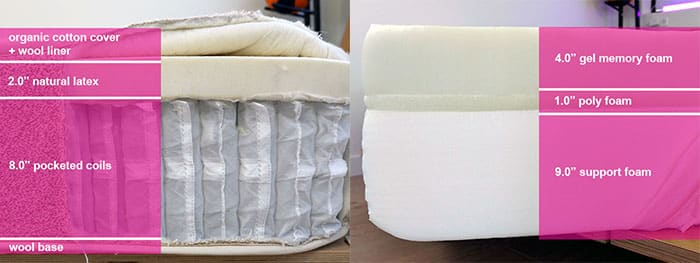
Interested to find out more? Here’s what you should know about the similarities and differences between the two.
What Is Memory Foam?
Let’s start with memory foam, or viscoelastic polyurethane foam. This synthetic material was designed for use by NASA in 1966. Researchers wanted to create a fabric that can absorb shock and keep passengers safe in NASA’s airplane seats.
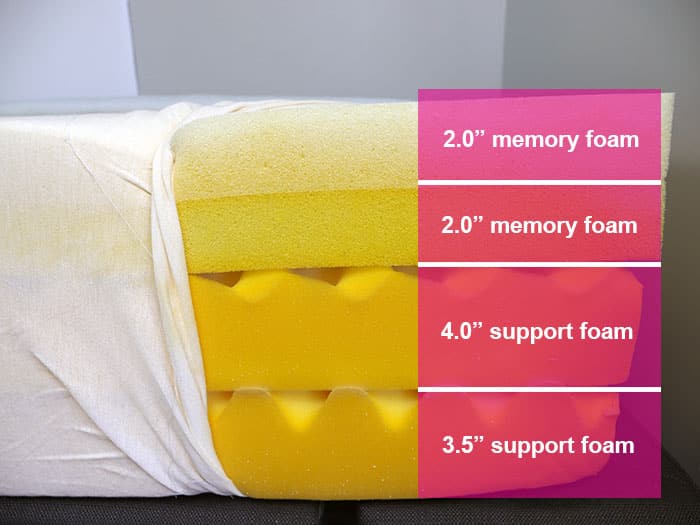
Memory foam became available to the public in the ’90s and evolved over the next decades. What makes it stand out is its ability to mold to the contours of a person’s body and bounce back to its original shape.
Today, this material is widely used across various industries. Consumers can purchase bike seat covers, orthotic braces, pillows, sofa cushions, and hundreds of other products made from memory foam.
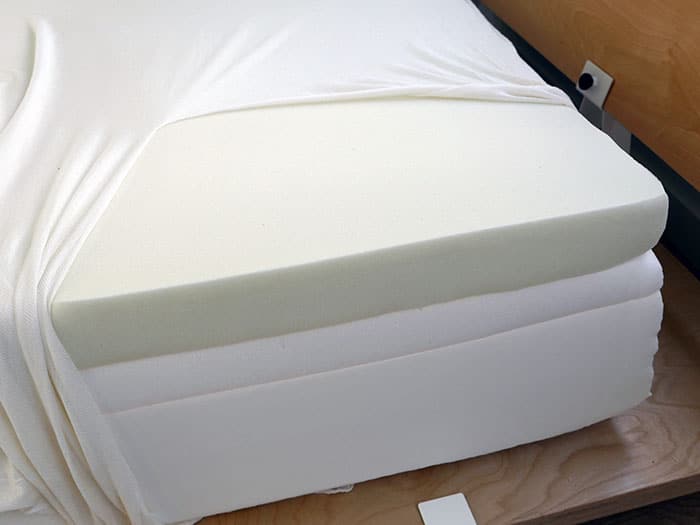
If you have allergies, you may be concerned about the side effects of polyurethane—the main component of memory foam.
However, premium memory foam mattresses are unlikely to cause allergic reactions. Manufacturers often use materials with hypoallergenic properties. On top of that, some mattresses are designed to prevent the growth of bacteria, dust mites, and allergens.
We won’t go into detail on this one, but you can read our guide, “What is memory foam,” to learn more about it. Inside, you’ll find everything you need to know about the different types of memory foam, their benefits, and their potential drawbacks.
What Is Latex Foam?
Latex foam is a durable material used in mattresses, pillows, and other bedding products. It’s produced from the milky white sap of the rubber tree and has multiple cells. After extraction, liquid latex goes through the Talalay or Dunlop process. The end product is latex foam.

This material can be natural, synthetic, or a mixture of the two, explains Cornell Law School. Natural latex is the only natural foam on the market—hence its higher price.
The cells inside latex foam contain air and may have different sizes and shapes. Since they’re filled with air, the foam is lightweight and more breathable than other materials. Plus, it can quickly spring back to its initial shape.
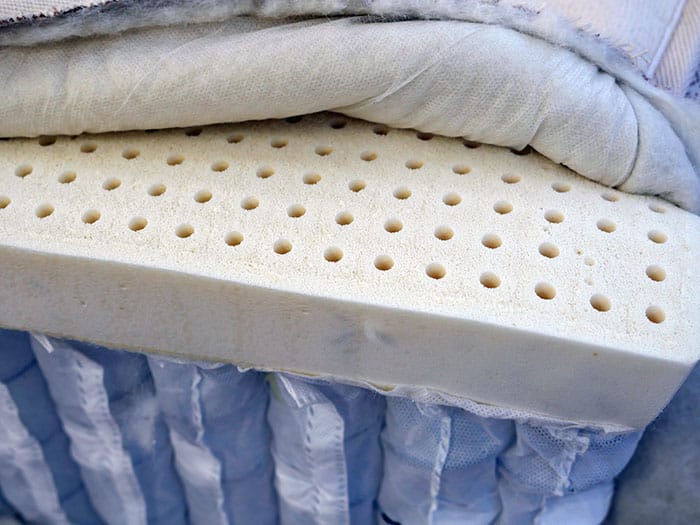
Note that both manufacturing processes—Dunlop and Talalay—have similar results. Generally, Dunlop foam mattresses are denser and more durable than Talalay foam. They also require less energy to produce. However, they’re not necessarily softer (as some manufacturers claim).
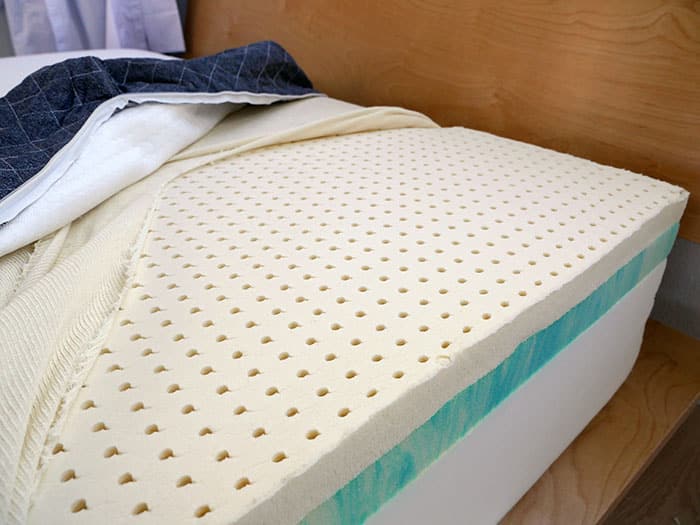
The differences between the two are negligible. What matters most is the actual quality of the foam. Any changes in the composition and type of latex or the production process will affect the end result.
Latex vs. Memory Foam: 12 Similarities and Differences
Both latex and memory foam mattresses offer adequate support. However, latex is more responsive than memory foam, regardless of the production method used. The downside is that it doesn’t mold to your body’s contours as much as memory foam; instead, it compresses and bounces back.
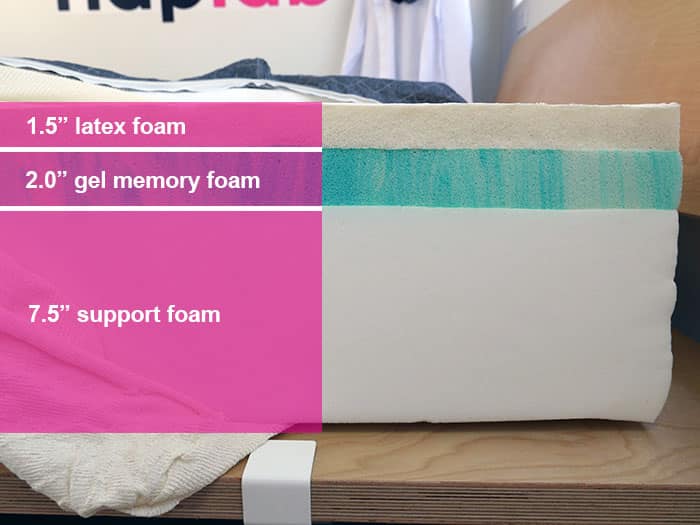
Before going any further, it’s important to understand not all latex is the same. Likewise, memory foam quality varies among brands.
Now let’s take a closer look at the similarities and between latex and memory foam:
#1. Support
- Memory foam adapts to the shape of your body, offering superior contouring. Due to its ability to relieve pressure points, it’s suitable for those with neck or back pain and other aches.

- Latex is more responsive and bounces back as you move in bed, which helps prevent that “sinking” or “stuck” feeling. Many consumers who don’t like the high contouring feel of memory foam find that latex foam offers many of the same general benefits of a foam mattress, but with a more balanced contour.
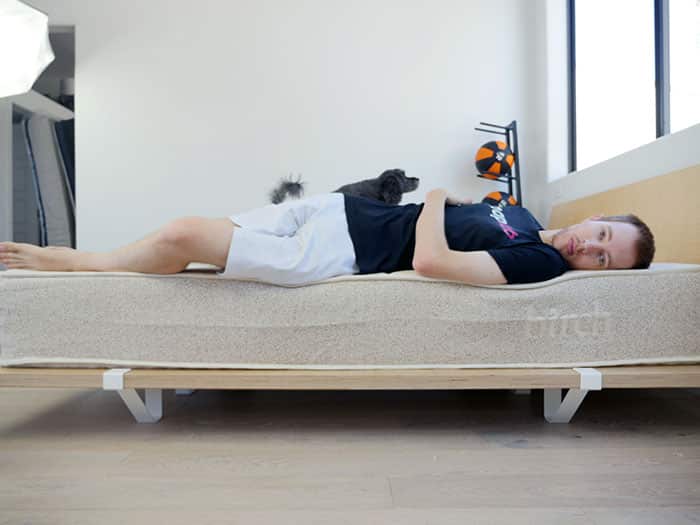
#2. Breathability
- Memory foam tends to retain body heat. However, newer materials and technologies, such as gel memory foam (among others), are designed to reduce heat retention, increase airflow, and keep you cool at night. See the thermal cooling video below.
- Latex foam, especially natural latex, has superior cooling abilities compared to memory foam. As mentioned earlier, this material features multiple cells that allow for airflow. See the thermal cooling video below.
#3. Motion Transfer
- Memory foam mattresses have low motion transfer, meaning that they reduce the level to which you may feel your partner’s movements during the night. See our motion transfer example video below.
- Latex, on the other hand, isn’t as efficient as memory foam at absorbing motion. Latex mattresses are bouncy and have a quick response time, so you’re more likely to feel your partner tossing and turning in bed. See our motion transfer example video below.
#4. Responsiveness
- While modern memory foam is far more responsive than the earliest versions, it still is relatively slower to respond compared to latex. This means once the memory foam has contoured to your shape it can take anywhere from a couple to many seconds before it is able to release the contour and adapt to the new pressure being applied to the mattress. See the video example of memory foam response below.
- Latex is usually more responsive than memory foam and other materials. For many sleepers, this helps prevent any “stuck” feeling while sleeping on the mattress. See the video example of latex foam response below.
#5. Feel
- When you sleep on memory foam, you may feel like you’re sinking into the bed or resting on a cloud. If you’re on the heavier side, you may have a hard time switching to a different sleep position. The same can happen if the mattress is too soft.
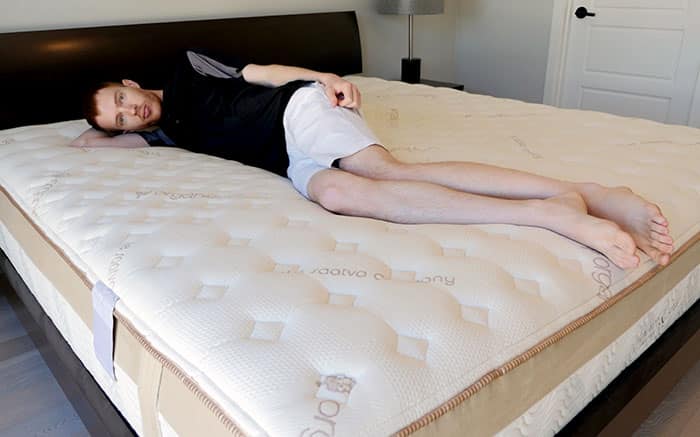
- Latex, by comparison, is more responsive and able to adapt to your shape more easily.. On one hand, this helps prevent excessive sinking. However, it also means that the contouring hug isn’t as dramatic. For back and stomach sleepers this is less of an issue, but some side sleepers may find the support dynamic isn’t quite right with latex.
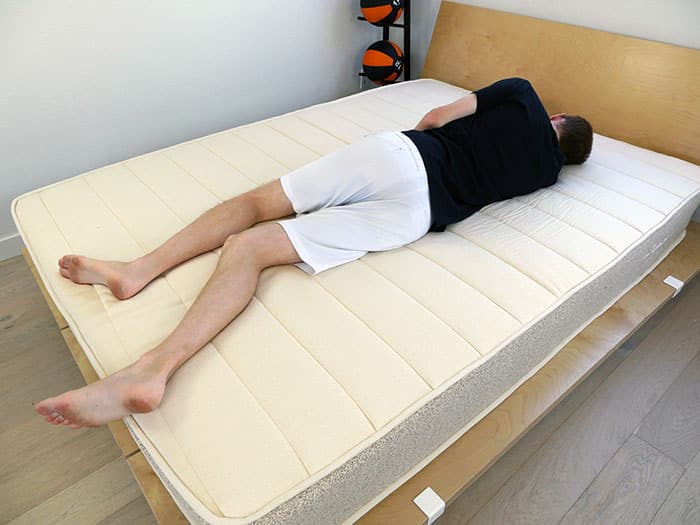
#6. Hypoallergenic
- Both latex and memory foam mattresses are typically suitable for allergy sufferers. The one and most important exception is those who are allergic to natural latex. If you are allergic to natural latex, but still want the latex feel, typically synthetic latex is a good alternative.
- Generally, natural latex is a preferred choice for those allergic to isocyanates or other compounds in polyurethane. Plus, it has excellent antimicrobial properties.
#7. Durability
- The average lifespan of a memory foam mattress is around 8 to 12 years, depending on its quality and how you care for it. If you’re particularly in this aspect, see our guide to learn more.
- With proper care, latex mattresses can last even longer. If you have one made from natural latex, you might be able to use it for as long as 15 years.
#8. Off-Gassing
New memory foam mattresses often have a strong odor. This smell is due to a class of chemicals called volatile organic compounds (VOCs), which are released into the air when you take your new mattress out of its box. They are also activated by body heat, explains WebMD.
Some people may experience eye irritation, headaches, and other symptoms when exposed to VOCs. However, the levels of VOCs in most mattresses are too low to cause serious side effects.

Synthetic latex mattresses contain petroleum-based compounds and may have chemical odors, too, but the smell should go away within days.
Natural latex doesn’t off-gas, but it may still have a rubbery smell during the first few days of use.
- If you’re concerned about VOCs, unpack your new mattress in a well-ventilated area.
- Keep the windows open after placing the mattress on your bed.
- You may also use fans to increase air circulation and get rid of unpleasant smells.
Ideally, choose a mattress made from CertiPUR-US certified foam. The CertiPUR-US certification guarantees that the foam has low VOC levels and no phthalates, heavy metals, ozone-depleting substances, and other chemicals.
#9. Mattress Weight
Generally, latex mattresses are heavier and more difficult to move around than memory foam mattresses.
- A regular mattress is around 50 to 150 pounds, depending on its size, construction, foam density, and other factors.
- Natural latex mattresses, by comparison, can weigh up to 195 pounds. However, a twin-size latex mattress is no heavier than 60 to 100 pounds.
Note that Talalay latex is lighter and less dense than Dunlop latex. Since it contains more air, it’s also less likely to cause overheating during sleep.
#10. Sustainability
Latex is derived from the rubber tree, a renewable source of rubber. Additionally, its production is more energy-efficient compared to memory foam manufacturing.
- Organic natural latex mattresses are the best option in terms of sustainability. These products are both recyclable and biodegradable.
- Synthetic or blended latex isn’t biodegradable, but it may be recycled. The same goes for memory foam mattresses.
- Natural latex is often treated with chemicals and dyes, so it may not be fully biodegradable.
#11. Price
The price of a mattress depends on its size, brand, materials, design, and features. Latex mattresses are typically more expensive than memory foam mattresses.
Depending on the above factors, you can expect to pay about $1,500 or higher for a latex mattress.
This material isn’t cheap, but it lasts longer than memory foam. Plus, you may be able to save a few hundred dollars by shopping online and using coupons.
#12. Availability
Memory foam mattresses are more widely available than latex mattresses. On top of that, they come in a wider range of styles and designs.
However, you can always order a latex mattress online.
Many Internet retailers offer a greater variety of products at better prices compared to physical stores. Not to mention that it’s easier to compare mattress prices and features when you shop online.
Latex vs. Memory Foam: Our Verdict
As you can see, both types of mattresses have pros and cons. Some consumers love the high-contouring cloud-like feel of memory foam, while others prefer the greater responsiveness and better cooling delivered with latex foam.
We recommend latex foam to those looking for a more natural mattress with a faster response time. Memory foam, on the other hand, offers better pressure relief and motion isolation.
As far as the price goes, memory foam is cheaper than latex, but it also has a shorter lifespan.
With either option, you can bring the costs down by shopping online.
Now that you know more about latex vs. memory foam, it’s up to you to make a decision. Consider your sleep position, health needs, and preferences, as well as your budget.
If you’re still on the fence, check out our guide on how to choose a mattress, or contact us with any questions you may have.
FAQ
Memory foam and latex foam have distinctly different feels so what might be right for one sleeper probably isn’t right for others. Memory foam is marked by deeper hug and contour while latex is known for higher bounce and faster response time.
Not necessarily. While there are a handful of medium firm or firm latex mattresses, there are also softer latex mattresses (ex: Spindle or Nest Bedding Owl).
Both memory foam and latex can be good for back pain. More important than the material is the firmness level. Firmer mattresses typically perform better than soft mattresses when addressing back pain.



